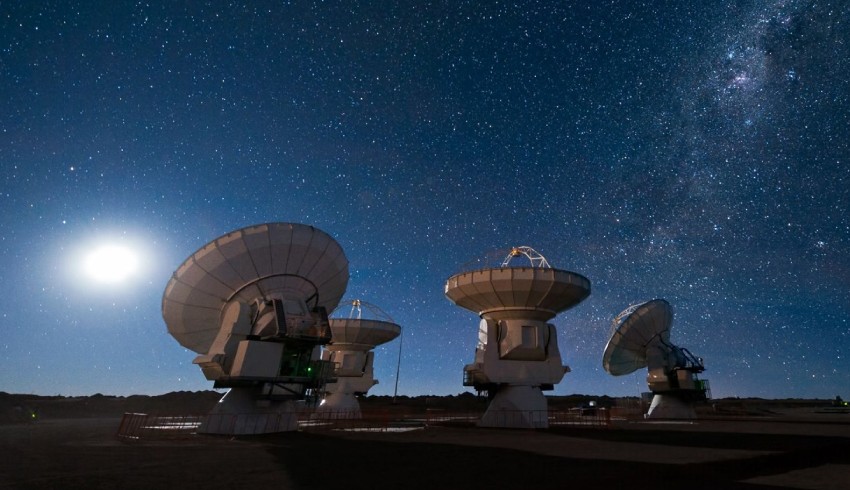The research has fuelled debate about how galaxies in the early universe assembled, including our own Milky Way galaxy. The observations were made using one of the most powerful radio telescopes in the world, the Atacama Large Millimeter/submillimeter Array (ALMA), in the Atacama Desert in northern Chile.
According to our current understanding of cosmology, the earliest large-scale structures in the Universe were spherical dark-matter ‘haloes’ that collapsed under their own gravity.
Surrounding gas fell into these haloes, subsequently forming stars and, ultimately, galaxies. Haloes and galaxies are thought to have continued to grow together by hierarchical assembly (merging), and through the further accretion of gas and its conversion to stars.
Hierarchical assembly is simple, and is thought to be well understood. However, there is still much debate surrounding the exact pathways by which gas accretion and its assembly into stars occurs, and how it relates to the formation of physical and dynamical structures in galaxies over time.
Dr Alfred Tiley from the UWA node of the International Centre for Radio Astronomy Research (ICRAR) said, “This is an exciting discovery for astronomers because it provides clues as to how large-scale structure began to form in the universe.”
According to our current understanding of cosmology, galaxy formation follows a hierarchical order. First, dark matter ‘haloes’ are thought to develop, which then draw in surrounding gas that cools to form stars and eventually galaxies.
“In the early stages, some models predict that the gas heats up as it falls into the dark matter halo. Over a long period the gas cools and allows the galaxy’s disk to form,” Dr Tiley added.
“But the discovery of a massive disk galaxy just 1.5 billion years after the Big Bang tells us its formation may have followed a different path — possibly a cold-accretion model in which the infalling gas remained cold, allowing for the rapid condensation of the disk.”
Dr Tiley said, “At this stage, this is just one galaxy, so we need to find more like it to further test our models and help us better understand what exactly was going on in the early universe.”

